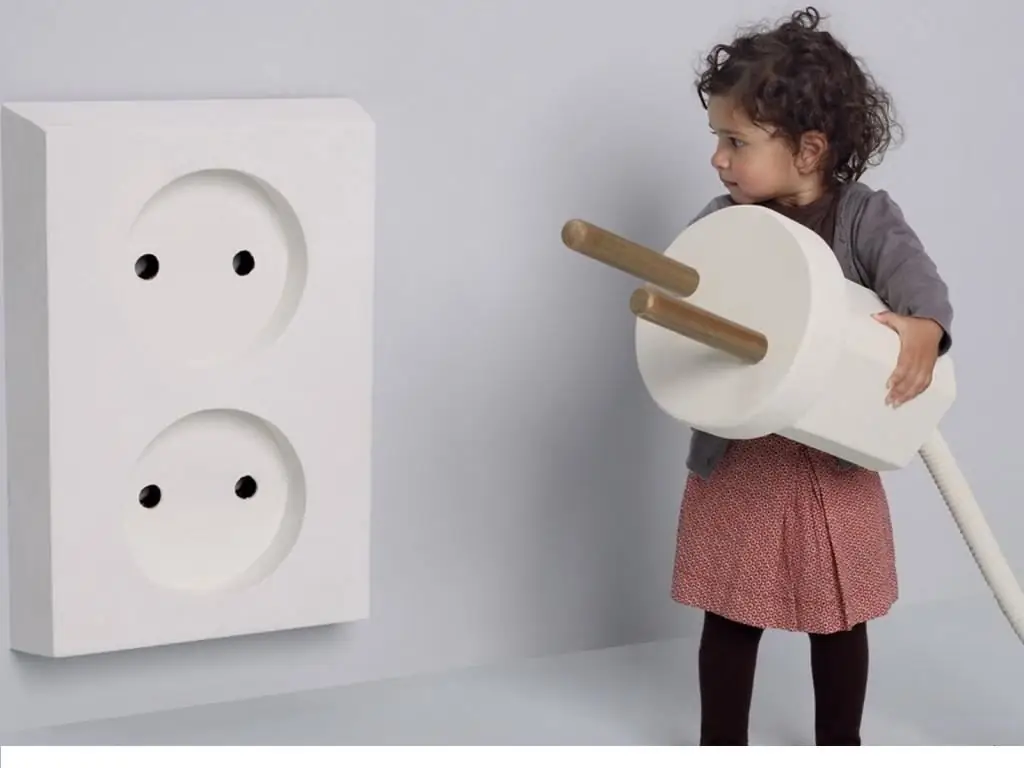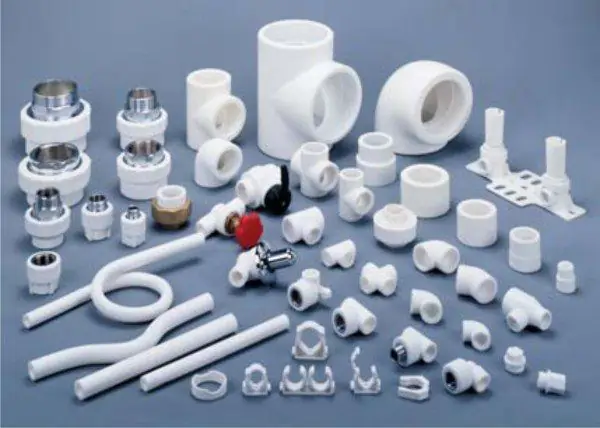
Table of contents:
- Do-it-yourself electrical wiring in an apartment: wiring repair and installation from scratch
- We draw up a wiring diagram
- Drawing up a wiring diagram for a private house
- Tools and materials required for wiring installation
- Do-it-yourself wiring installation using an open method
- Installation of hidden wiring
- Repair of electrical wiring: how to do it right
- DIY video about wiring
- Author Bailey Albertson [email protected].
- Public 2023-12-17 12:53.
- Last modified 2025-01-23 12:41.
Do-it-yourself electrical wiring in an apartment: wiring repair and installation from scratch

It's no secret that electricity has long been an integral part of our life. A full-fledged existence without it is impossible either in the city or in the countryside. That is why the design of electrical wiring in the construction of housing of any type is almost an initial task.
Of course, the installation of an electrically conductive system is an occupation that requires certain knowledge and skills, and sometimes even special permission. However, you can do the electrical wiring in your apartment yourself. All you need is basic knowledge of electrical engineering, process and safety compliance, and a few more aspects that will be covered in this article.
We will cover the entire process of installing electrical wiring, from preparatory work to checking the operability of the structure, in as much detail as possible. Our tips will help you cope with the electrical wiring in the apartment with your own hands at a professional level.
Content
- 1 We draw up a wiring diagram
- 2 Drawing up a wiring diagram for a private house
- 3 Tools and materials required for electrical wiring
- 4 Do-it-yourself wiring installation using an open method
- 5 Installation of concealed electrical wiring
- 6 Repair of electrical wiring: how to do it right
- 7 Video about the installation of electrical wiring with your own hands
We draw up a wiring diagram
As with any business, the installation of electrically conductive systems in a room should begin with design. Experts advise to apply markings on the walls, which will indicate where the wires, lighting fixtures, connecting conductors and sockets will be located. In addition to your own preferences in planning the lighting of a room, you should take into account the individual characteristics of the room and the following rules:
- Conductive cables are located strictly horizontally or vertically;
- Cable turns are formed at right angles;
- The distance between cable bundles and ceilings is 150-200 mm;
- The distance between cable bundles and openings of windows or doors is at least 100 mm;
- Light switches are located on the side of the door handle at a height of 0.8 meters or 1.5 meters from the floor;
- Electrical sockets are located at any height convenient for the user;
- The number of outlets is usually calculated from the ratio of 1 element per 4 running meters of the wall;
- The arrangement of sockets in adjacent rooms in adjacent recesses is permissible;
- It is recommended to locate switchboards close to the place of power cable entry at the level of 1500-1700 mm from the floor;
- It is imperative to provide for the ability to connect the protective earth to the shield housing.

When you have decided on the places for laying cables and installing electrical elements, make a do-it-yourself wiring diagram on paper, observing the scale relative to the size of the room. This will be useful to you in the future, if you need to repair the electrical wiring.
Drawing up a wiring diagram for a private house
Electrical wiring in an apartment and in a private house can differ significantly from each other, due to certain features of the construction, the location of the premises, the building materials used. Accordingly, the scheme will also require an additional approach.
- Most often, for private houses, a circuit is used, designed as follows: there is a general circuit breaker on the facade, to which a cable is connected that feeds the general distribution board in the house. The switchboard is used to supply and distribute electricity to all rooms.
- In order to ensure smooth operation and maintenance of the network, during the design of the circuit, divide the system into groups according to certain types. For example, floor by floor, by room, or according to the principle "lighting - power consumers - external communications." Consider the current loads for each group separately.
- It is necessary to connect consumer groups to each other using additional circuit breakers installed in the switchboard. In some cases, for example, when consumers operating in aggressive conditions are connected, protection elements such as RCDs are connected.
- When calculating the scheme, use the house plan. Thus, it will be easier for you to rely on the individual characteristics of the building.

Remember the basic recommendations when installing electrical wiring with your own hands in any room:
-
- The phase is interrupted by a switch;
- At least one junction box is recommended for each room;
- Appliances such as a washing machine, boiler, air conditioner, it is desirable to be powered from separate lines in order to ensure the grounding of the case.
Tools and materials required for wiring installation
After the project is fully agreed and approved, you need to decide on the choice of the necessary materials and purchase them. This should be done taking into account all the technical features of the facility.
- When purchasing cable and wiring products, opt for insulated copper cables. The suitable conductor cross-section must be determined based on the power consumption of the object. In standard applications, for example in residential buildings, conductors with a cross section of 1.5 / 2 mm for the lighting circuit and 2.5 / 2 mm for the power group are usually used. Due to this feature, these cables are used with a power consumption of lighting devices up to 4 kW with a total power of the remaining consuming elements up to 6 kW.
- In addition to cables, you need to purchase junction boxes, sockets, switches, electricity meters and protective shutdown systems. If you plan to install open wiring, you will need special plastic boxes, mounting clips, corrugated hoses.
Now you need to decide what type of electrical wiring you want to use in your apartment: hidden or outdoor. Each type has its own characteristics, advantages and disadvantages, which should be considered in more detail before starting work.

Hidden wiring is located in pre-prepared cavities inside the walls. This allows you to hide the wires, protect them from mechanical damage, and therefore ensure safety from fire. The disadvantages include the laboriousness of the method and the low maintainability of the structure.
External electrical wiring is located on the surface of the walls inside special boxes, pipes or gutters of the floor plinths and is fixed with appropriate fasteners. Among the shortcomings - an unaesthetic appearance and vulnerability to external mechanical damage.
Now let's look at each option in more detail.
Do-it-yourself wiring installation using an open method
This method of providing housing with electricity is considered the simplest and most inexpensive. Since all conductive elements remain in sight, maintenance and repair of electrical wiring, if necessary, is quite easy. But this method has some features that limit the use of such wiring in a residential building. These are low mechanical strength and primitive aesthetic characteristics.

You can easily mount open wiring. To do this, use flat wires of the APR, APPV, APRV brands. There are two ways to attach them to the base of the wall:
- pre-prepared tin strips 1 cm wide, laying electrical cardboard;
- using special plastic fasteners fixed with nails or glue.
Please note: if the current-carrying line is laid on a base made of flammable materials, it is imperative to lay a layer of heat insulator under the wires.
-
- When calculating the pitch of the clamps holding the wires, control the absence of sagging in all positions. The clips should be located at a distance of 50 mm from the corners and locations of the main wiring elements.
- Pay special attention to the arrangement of the main elements of the electrical network. All of these should be attached to the wall using wood or plastic spacers to provide additional electrical insulation. Select the size of the spacers so that they are not visible.
- After routing the cables and securing the junction and junction boxes, proceed with the circuit wiring. To do this, lead the conductors into the boxes, leaving a stock of 75-100 mm, so that it is convenient to carry out further installation work, and connect them.
Installation of hidden wiring
In a house or apartment, hidden wiring is most often used, due to its invisibility and aesthetics. Here are the basic guidelines to follow in your workflow:
- The cables should be placed either in prepared grooves or under a layer of plaster;
- In places where the wires cross each other, provide additional insulation with a special insulating tape;
- Experts recommend that when fixing the conductors on the wall surface, observe a step of 0.4-0.5 m, and use plastic fasteners or the method of freezing with alabaster for fixing;
- Install the distribution and installation boxes in the pre-prepared recesses in the wall using alabaster;
- Reinforce the places where the wires go to the lights by installing insulating tubes.

Further work is carried out in the same way for both hidden and external wiring. You need to twist the wires in the following sequence:
- Remove the external insulation from the cables inserted into the boxes by about 60-80 mm;
- Cut off approximately 50 mm of insulation from all conductors inserted into the box;
- Using a knife, strip the cable conductors to a metallic sheen;
- Twist the corresponding wires together, insulate the bare areas.
The last step in the installation work is to connect all electrical appliances in the system and adjust the circuit.
Repair of electrical wiring: how to do it right
You may need to repair the wiring in the event of a malfunction. This may be evidenced by constant voltage drops, flashing light and bulbs, which often burn out.
Stock up on these tools:
- Pliers, screwdrivers and side cutters with insulated handles;
- Wire cutters or knife for stripping wires;
- Roulette;
- Screwdriver;
- Voltage tester;
- Drill with special drills for concrete or wood (depending on what your walls are made of);
- Wires, fittings, fittings;
- In some cases, a puncher.
De-energize the mains first. A break or bare wire found during the repair must be immediately insulated. Use a special electrical tape for this.

The wires at the break point must be twisted not with your hands, but with pliers - this way the contact will be stronger. It is even better if you solder the broken wire, and wrap the solder with special electrical tape. In a small area, it is better to replace the wire with a whole one.
The best option would be to completely replace all the wiring, especially if the old wires are aluminum and the new ones are copper.
DIY video about wiring
We hope that our tips helped you in your work. Please ask your questions in the comments, share your experience, tell us what problems arose in the process and how you dealt with them. You may be familiar with new ways and methods of conducting electricity. We are always happy to discuss with our readers everything new in construction and repair with our own hands. Good luck and comfort to your home!
Recommended:
How To Wean A Cat From Tearing Wallpaper And What Kind Of Wallpaper Cats Do Not Scratch, Video

Practical advice on how to stop your cat from scratching the wallpaper. The right choice of coverage that the cat will not take. Tips on how to distract your cat
We Repair A Coffee Grinder With Our Own Hands: How To Disassemble, Wash And Adjust, How To Grind Coffee Correctly + Video Instructions

What coffee grinders are, how to grind coffee correctly, what are the malfunctions, how to repair a coffee grinder with your own hands
Lathing For Metal Tiles: What Needs To Be Considered During Installation And How To Correctly Calculate The Amount Of Material + Diagram And Video

What is better to make a crate for a metal tile. What is the lathing step. How to calculate lumber. Errors in the installation of battens and metal tiles
Do-it-yourself Membrane Roof Installation And Repair, Equipment For Work + Video

The choice of membrane for the roof. Installation technology depending on the selected membrane. Tool for work
How To Install Polypropylene Pipes With Your Own Hands: Installation, Instructions, Diagram, Recommendations + Video

Practical recommendations for installing polypropylene pipes with your own hands. The use of polypropylene pipes for water supply and sewerage systems
